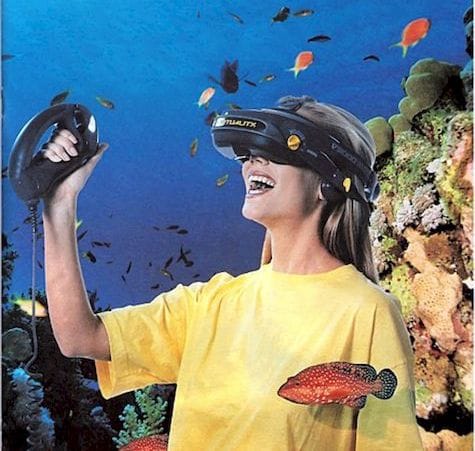
Virtual reality (VR) has come a long way since the offerings of the late 1980s and 1990s.
Gone are the nausea-inducing, low resolution outings such as Virtuality’s “Dactyl Nightmare” and the monochrome VirtualBoy from Nintendo, and in their place, we all have access to high resolution VR capabilities in our own pockets.
Yes, assuming you own a smartphone with gyroscope capability (which is most smartphones), you can slide your device into a $15 Google Cardboard headset and have access to VR worlds that wouldn’t have been conceivable 20 years ago.
This has all been driven by the reduction in processor size, reduction in sensor size, and an increase in resolution offered by fancy new device screens. No longer do you require a bulky Commodore Amiga 3000 to run your 756x244pixel first-person shooter. Instead, you can experience full HD glory anywhere you like.
So, with the increase in accessibility of VR systems, we also see an increase in applications—not just in gaming, but in engineering circles.
For this article, we spoke to five engineering CAD companies about how they have adopted AR/VR to enable engineers a new dimension when it comes to technical communication, design and presentation.
SOLIDWORKS
We have covered quite a lot about SOLIDWORKS Visualize Professional over on our sister site EngineersRule. The latest release of Visualize Professional features AI denoising and even a vehicle physics simulator, allowing not only photorealistic rendering but also rapid, noise-free rendering to boot.
And naturally, such high quality rendering would befit some form of VR capability…and it does.

Dassault Systèmes SOLIDWORKS has a 20+-year legacy of providing only the best CAD tools to our customers and as such we are pioneering development of bleeding edge technologies,” said Brian Hillner, SOLIDWORKS product portfolio manager.
“Virtual reality has proved to be much more than a gimmick, being used by aerospace, automotive, product design and even medical industries throughout design development and even sales. Using a new 360-VR camera, SOLIDWORKS Visualize Professional can create jaw-dropping photo-accurate images and animations, even supported for simple playback with any smartphone and a $15 Google Cardboard.”
And if you combine this new 360-VR camera with the AI denoiser, then what you have is the ability to render ultra high definition, 360-degree content at up to 10x the pace as without the denoising magic.
“This allows our customers to develop products faster than ever before, all while reducing physical prototyping costs and expensive manufacturing errors. This results in dramatically shorter development cycles and an overall better final design.”

You can see one of the animations in the video below. Just put your VR headset on, be it a GearVR, Cardboard, or whatever you own, and start it up. And if you don’t yet have a headset, you can still play the video—just play it in your browser as you would any other video and drag your mouse cursor around the video screen playback area to have a look around you.
And if you’d like to know how to create these VR experiences for yourself in SOLIDWORKS Visualize Professional, you can check out our tutorial over at this link.
Onshape
Cloud-based CAD platform Onshape has also been getting involved with VR/AR, and has recently teamed up with AR headset system company MagicLeap to help bring CAD to the quasi-holographic realm. The application has been referred to as a “special computing CAD app” and is good for not only viewing CAD designs but also editing them, which is really a considerable step beyond what most other companies are offering at the moment. While the other CAD companies are focused on bringing high-end visualization and even a fair amount of interactivity to their VR offerings, these products are still pretty much restricted to viewing VR content, rather than creating it in VR itself.
Onshape for Magic Leap was unveiled at the L.E.A.P Conference in October 2018, where Onshape CEO Jon Hirschtick gave a preview of the system to attendees.
The collaboration between Magic Leap and Onshape will enable the manipulation of parts in a more natural way, with gesture recognition allowing sketching, resizing and various other CAD functions that we are used to performing with a mouse in two dimensions.
Read more at ENGINEERING.com










